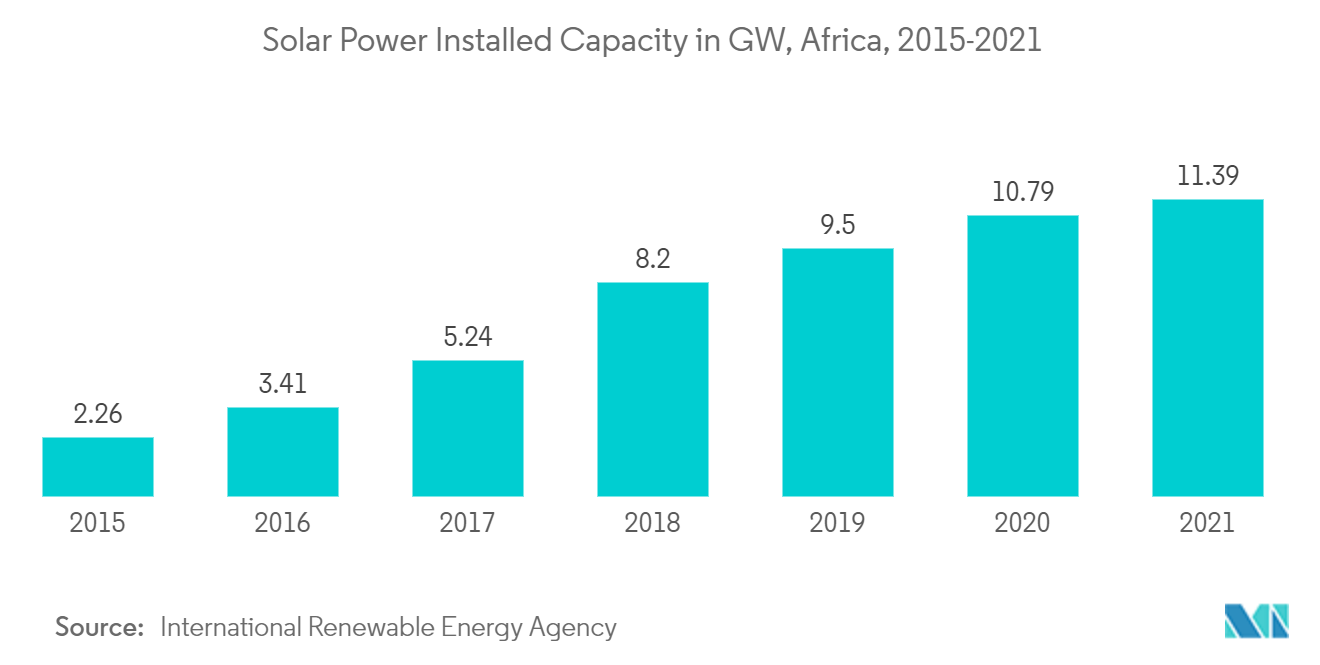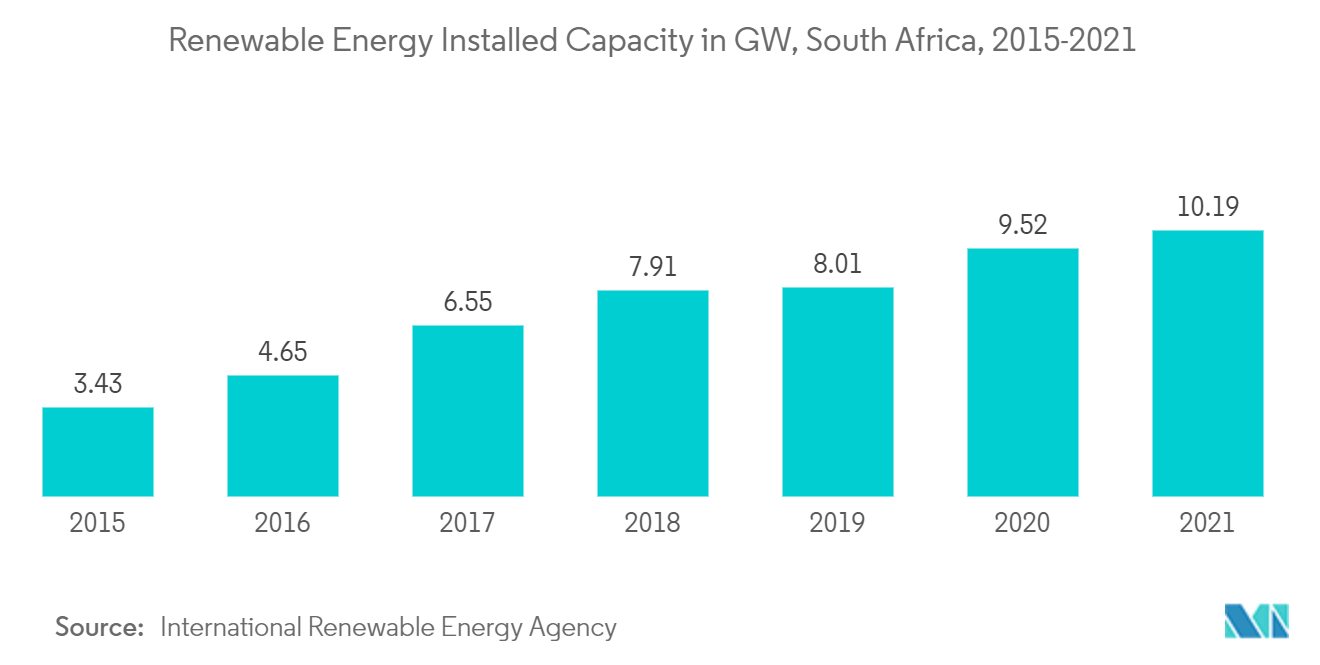Market Trends of Africa Renewable Energy Industry
This section covers the major market trends shaping the Africa Renewable Energy Market according to our research experts:
Solar Energy is Expected to be the Significant Market
- Solar energy is expected to be one of Africa's fastest-growing and most significant markets. In 2021, Africa's cumulative installed solar energy capacity had reached 11.39 GW compared to 10.79 GW in the previous year.
- Several countries have realised the potential of solar energy and are supporting the development of solar projects in the region. For instance, South Africa aims to reach net-zero emissions in 2050. To achieve this ambitious target government is strategically investing in renewable energy projects, particularly solar. The Department of Mineral Resources and Energy (DMRE) in South Africa has been launching various auctions under the Renewable Energy Independent Power Producer Procurement Programme (REIPPPP) to support renewable energy projects, including solar.
- In Africa, solar energy is harvested using concentrated solar energy and photovoltaic power. In February 2022, Redstone concentrated solar energy project, a 100 MW integrated CSP plant, secured financing of USD 764.63 million and a commitment of USD 151.95 million. The project has also received funding from international and South African financial institutions, including ABSA Bank, CDC Group, Development Bank of Southern Africa (DBSA), Deutsche FMO Investec Bank, Nedbank Limited, Sanlam Limited and the Industrial Development Corporation of South Africa. The project is anticipated to be operational by the end of 2023.
- Further, in May 2022, the government of Egypt is looking to accelerate the renewable energy projects in the country, with plans to generate about 10,000 MW of solar and other renewable power in 2023. The government expects the rise in renewable energy production as several energy projects are likely to be completed and operational in the coming years.
- Furthermore, in June 2022, the Nigerian state of Lagos aims to install 600 MW of commercial and industrial (C&I) rooftop solar to reach 1 GW of solar capacity by 2030. The ministry has revealed how the regional authority and the World Bank foresee the breakdown of the 1 GW ambition. Citing a need to invest between USD 350 million and USD 700 million in 500 MW of rooftop solar by mid-2027, according to the energy ministry, 200 MW of the 1 GW is likely to be residential arrays. Such projects are expected to see massive solar energy deployments during the forecast period.
- Thus, owing to the above-mentioned factors, solar energy is expected to be the fastest growing and most significant market during the forecast period.

South Africa to Dominate the Market
- South Africa is one of the fastest-growing economies and the largest energy consumer in Africa. The country has abundant natural and mineral resources and high renewable energy potential. In 2021, the total installed renewable energy capacity in South Africa had reached more than 10 GW. Of the total capacity, more than 43% has come from wind, 32% from hydro and 24% from solar energy.
- Further, the country has set a target of adding 17.8 GW of renewable energy capacity to the energy mix by 2030 and set up a Renewable Energy Independent Power Producer's Programme (REIPPP) to boost investments in the sector. Additionally, in 2019, the government approved the Integrated Resource Plan (IRP), which aims to boost the renewable energy share in the total energy mix.
- In April 2022, the Department of Mineral Resources and Energy (DMRE) of South Africa launched 2.6 GW of renewable energy capacity for tendering under the 6th round of the Renewable Energy Independent Power Producer Procurement Programme (REIPPPP). The tendered capacity includes 1 GW of solar PV and 1.6 GW of wind power, and the deadline for the tender proposal submission has been set for 22nd August 2022.
- According to the DMRE, the qualification criteria developed for the auction process are focused on promoting the participation of projects that can be constructed within 24 months after their financial close and connected to the national power grid as soon as possible. During the 5th round of REIPPP, launched in March 2021 and closed in October 2021, 25 bids were successful. It included 12 wind (cumulative capacity- 1.6 GW) and 13 solar (cumulative capacity-1 GW) projects ranging in size from 75 to 140 MW.
- South Africa also focuses on closing down older coal plants and increasing the renewable energy capacity to meet growing demand. Additionally, South Africa is blessed with incredible mineral wealth and has the potential to establish a local renewable energy hardware manufacturing hub. For instance, in July 2021, Italian firm Enertronica Santerno announced plans to expand its solar PV component manufacturing capacity in the country. The company plans to invest nearly ZAR 17 million to enhance the production capacity of inverters for solar PV applications. Initially, the maximum production capacity is expected to be capped at 500 MW/year, gradually ramping up to higher capacity targets.
- Hence, owing to the combination of the above factors, the South African Renewable Energy Market is expected to grow steadily and dominate the market during the forecast period.


